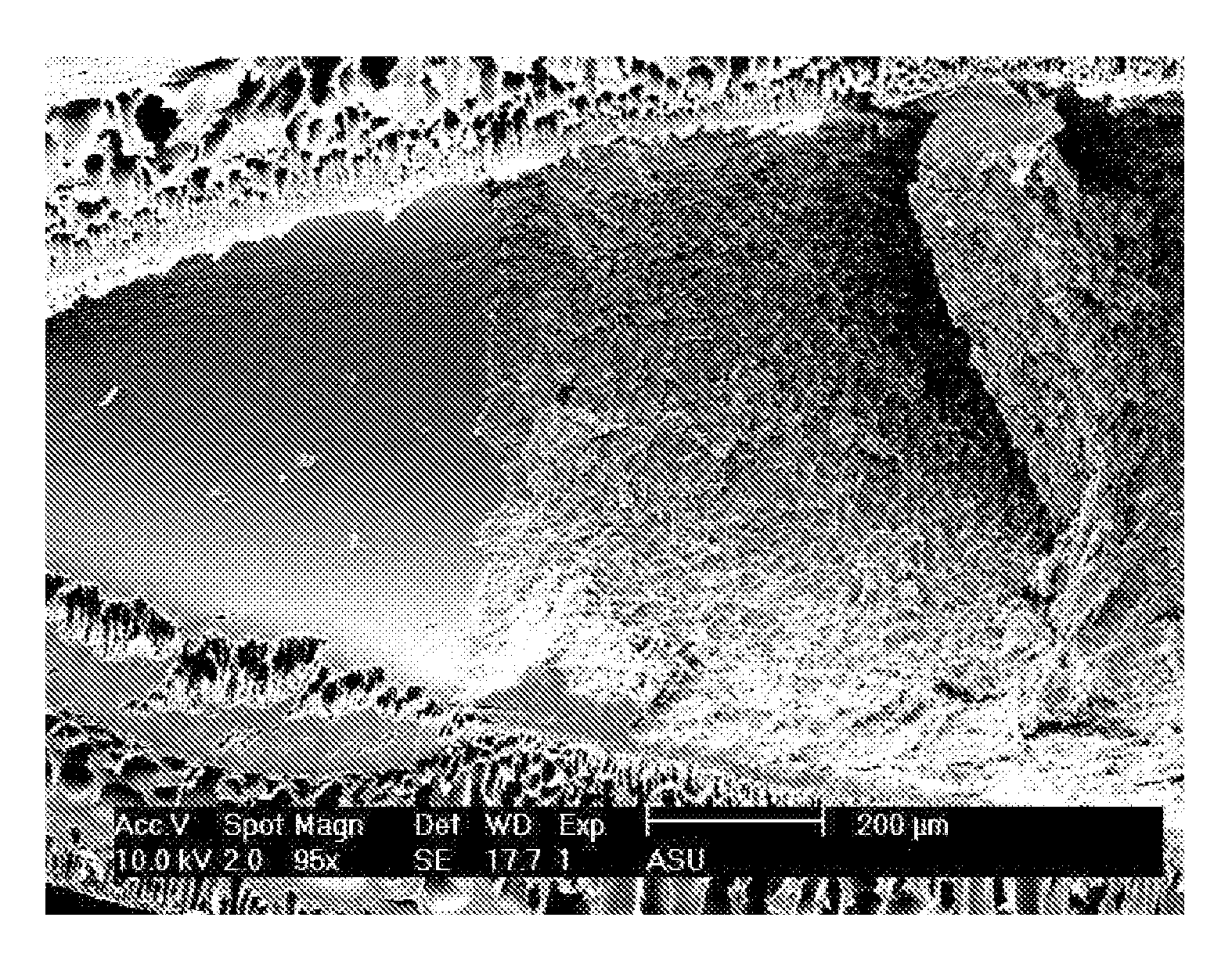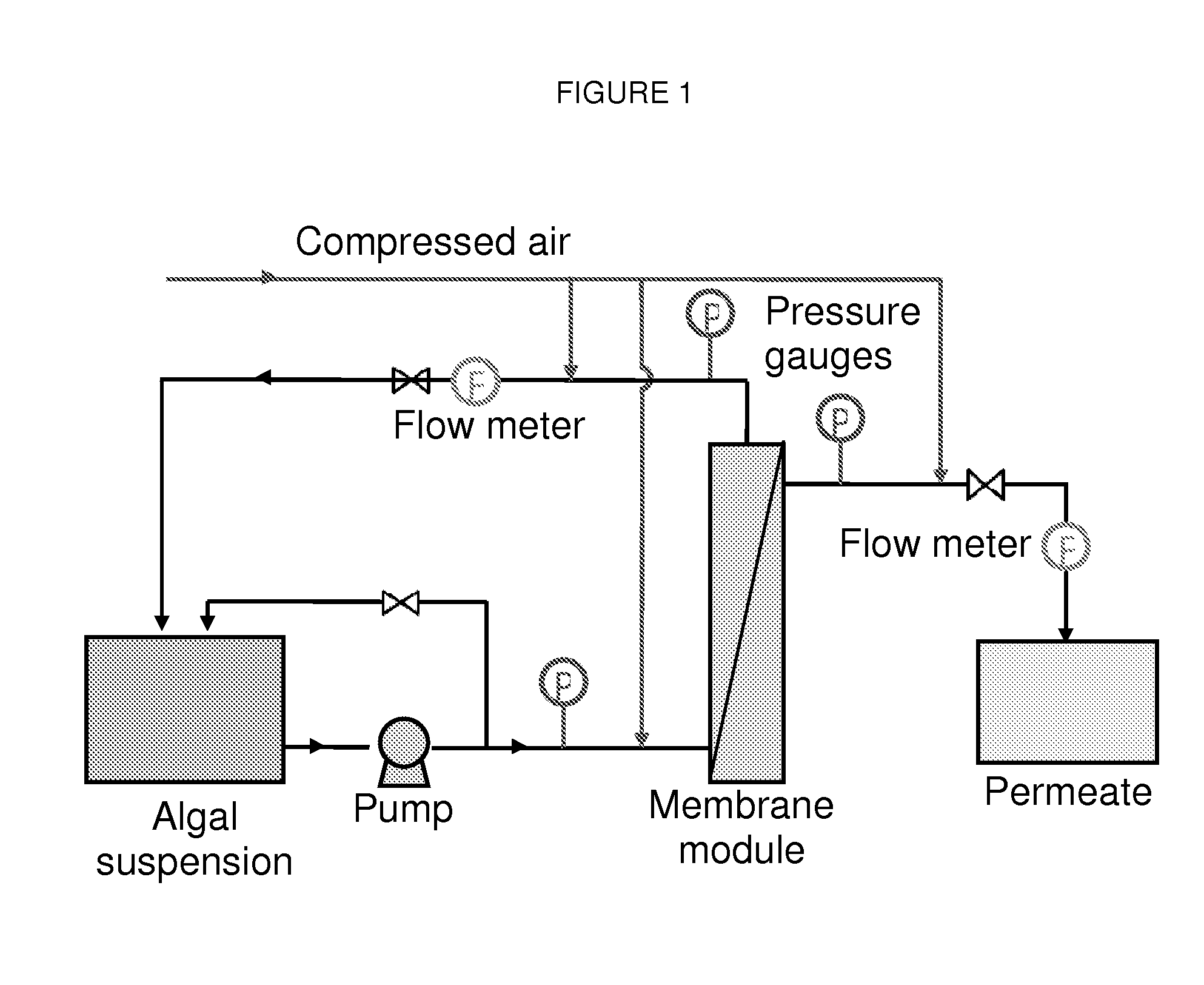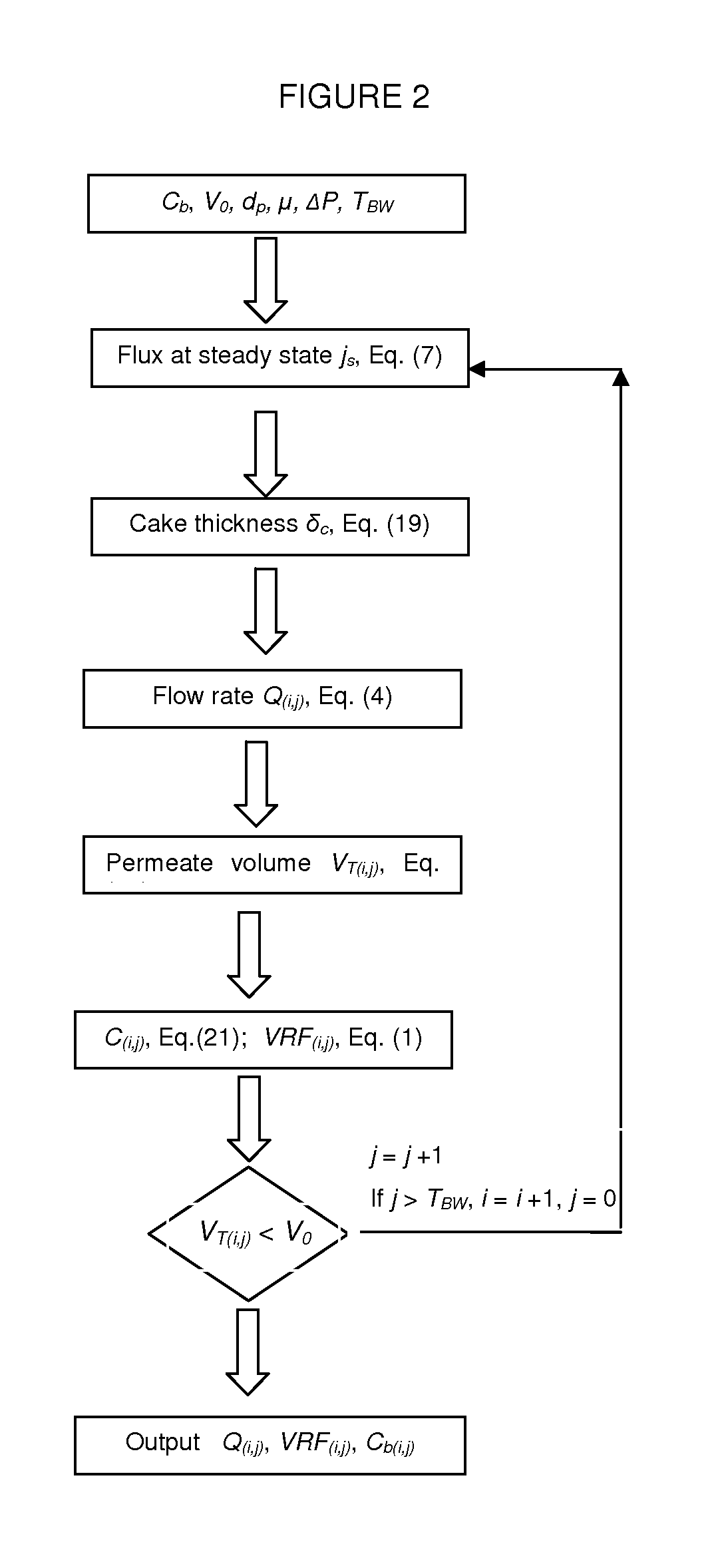Method of Separation of Algal Biomass from Aqueous or Marine Culture
a technology of algal biomass and marine culture, which is applied in the field of separation method of algal biomass from aqueous or marine culture, can solve the problems of inability to achieve an effective concentration of biomass on an industrial scale, lack of an economical and efficient method of biomass harvesting, and fouling of the membran
- Summary
- Abstract
- Description
- Claims
- Application Information
AI Technical Summary
Benefits of technology
Problems solved by technology
Method used
Image
Examples
example 1
Experimental Procedures
[0063]Characterization of Algae. Scenedesmus quadricauda was obtained from our outdoor algal panel photobioreactor, and BG11 culture medium (17) was used to grow the algae. pH of the culture ranged from 7.0˜8.9 during the experimental period. Daily maximum temperature was 35° C. and minimum temperature was 15° C. Daily maximum sunlight intensity was 1900 μmol / (m2·s).The size distribution of the stain was measured by micro-flow imaging (DFA 4100, Brightwell Technologies Inc., ON, Canada). The morphology and shape of the algae were observed with a microscope.
[0064]Membrane System and Algae Concentration Process. The batch algae concentration experiment employed a lab scale polyvinylchloride (PVC) ultrafiltration (UF) membrane unit with a membrane molecular weight cutoff (MWCO) of 50 kDa and a 0.125 m2 filtration area because of its excellent chemical resistance. The batch experiment was run under constant pressure. To reduce the dilution of the algae suspension ...
example 2
Results
[0089]Fouling Tendency of Algae on the Membrane. FIG. 3 presents the flux decline curves for the filtration of different types of water. The flow rate was very stable when tap water was used. A slight flux rate decline was observed in the filtration of the algal culture media, indicating that it contained some foulants. Similar fast flow drops were found in the filtration of the original algal suspension (algae and culture media) and of the algal suspension in DI water, though the decline for the original suspension was slightly higher. The results indicate that the cake layer dominates the total resistance during the entire experiment. This is quite reasonable when the algal size is compared with the membrane pore size. Similar results were obtained from research focusing on the removal of Chlorella sp. and cyanobacterial cells via membrane filtration (13, 17).
[0090]Characterization of Foulants. FIG. 4A and FIG. 4B present SEM images of virgin and fouled membranes. The insid...
example 3
[0096]Modeling of cake thickness development. During the concentration process, the permeate was returned to the feed tank, and the algal concentration was tested at different times. Based on the mass balance, the thickness of the algal cake layer was calculated. FIG. 6 shows the decrease in algal concentration and the increase in cake thickness. The thickness of the algal cake layer also was calculated using the model. As shown in the figure, the algal concentration in the feed tank decreased gradually due to the cake attached to the membrane surface. The deposited cake layer was about 12.3 microns thick after 30 min filtration. The cake thickness predicted by the model agrees with the experimental data (R2=0.993), indicating that the model works well.
[0097]Modeling of the flux decline under different cross flow rates. Further validation of the model was conducted by predicting the flux decline under different conditions. FIG. 7 shows the experimental and model-pre...
PUM
| Property | Measurement | Unit |
|---|---|---|
| Fraction | aaaaa | aaaaa |
| Fraction | aaaaa | aaaaa |
| Fraction | aaaaa | aaaaa |
Abstract
Description
Claims
Application Information
 Login to View More
Login to View More - R&D
- Intellectual Property
- Life Sciences
- Materials
- Tech Scout
- Unparalleled Data Quality
- Higher Quality Content
- 60% Fewer Hallucinations
Browse by: Latest US Patents, China's latest patents, Technical Efficacy Thesaurus, Application Domain, Technology Topic, Popular Technical Reports.
© 2025 PatSnap. All rights reserved.Legal|Privacy policy|Modern Slavery Act Transparency Statement|Sitemap|About US| Contact US: help@patsnap.com



